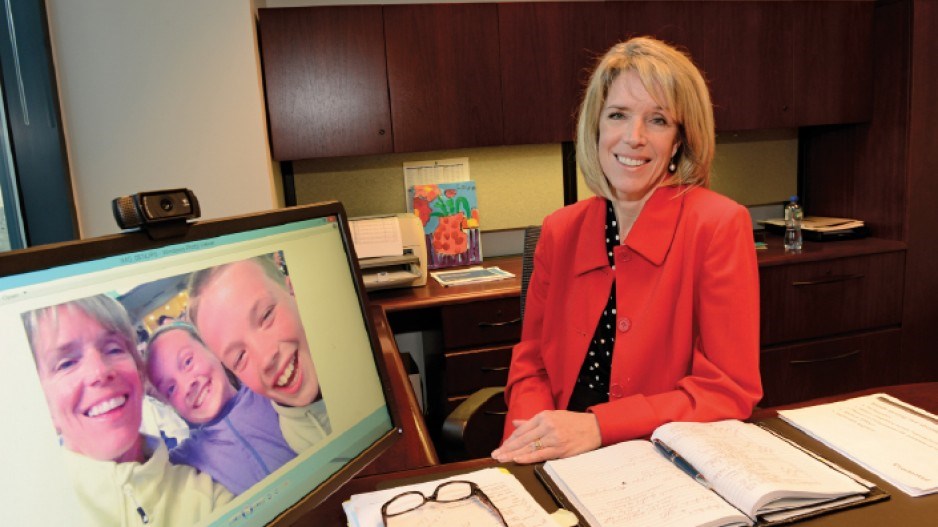For several months after Dave Benson quit his job to be a stay-at-home dad, his mother helpfully mailed him newspaper clippings of job postings all the way from Toronto.
“I think she did it from a good place,” he said.
His wife, Kim Thompson, also spent a few months explaining to her mother that Benson wouldn’t be looking for a new job because he already had one: looking after their two children, aged 11 and 13, as well as all the household duties.
“My mom would ask me, ‘So, what’s Dave going to do?’” Thompson said. “And I’d say, well, he’s doing lots of stuff right now!”
The arrangement leaves Thompson free to pursue her career as senior vice-president of advisory services at Credential Financial.
“Knowing that I can pick up at a moment’s notice and travel, it allows me to be very effective at my role,” she said.
Juggling a high-flying corporate career with a young family can seem like a herculean task. But women who have done it say it is possible – with help. That “community of support” can include paid child care and family, but an absolute must is a partner who will be your other half in parenthood as well as marriage.
“I absolutely wanted my four-month-old, my four-year-old, my 14-year-old, when they called out in the middle of the night, at least 50% of the time, to call out for their daddy as opposed to their mommy – and that was purely selfish,” said Lisa Vogt, a partner at McCarthy Tetrault. “I didn’t want to be the only one getting up in the middle of the night.”
Vogt and her husband, a doctor, decided early on that they wanted to have a large family. But she also knew she didn’t want to take much time off from her legal career. So the couple bought an old house, raised it to create a two-bedroom suite in the basement and hired first one, then two nannies, to tend to what became a brood of five.
“I had always known I wanted to work,” said Vogt, who is also one of five siblings.
“Even as a young child, I kind of wanted my father’s life. … He had all the best of both worlds. Something really intellectually challenging, and then to come home to a family.”
Vogt and Thompson both say they went into parenthood with a plan. Thompson and Benson agreed that one of them would stay home with their children while the other worked; Vogt and her husband settled on the live-in nanny plan in order to have stable, predictable child care.
Thompson and Benson, who both built careers in the financial services sector, switched the stay-at-home role to Benson four years ago, following several years when Thompson stayed home.
“By year four [of staying home], I realized that because I absolutely thoroughly enjoy what I do … and my kids were a little bit older, I re-evaluated what having it all meant to me and knew it was time to re-enter,” Thompson said.
While Benson found the transition difficult at first, managing his kids’ many sports activities, their school life and the household now fill his days with busyness. Taking time out of a professional career may not be for everyone – but he thinks more fathers should try it.
“There will be some who will step away, as in my case, and think it’s a great thing and have no wish to change it,” he said. “But if you don’t try, you’ll never know.”
To other women who might be questioning whether committing to a career will put too much strain on family life, Thompson advises focusing on the arrangement that will work for them and then involving the other “stakeholders.”
“It starts with you, and then you build that out and you have that conversation with your husband and your family and go, ‘Here’s what we need to put in place so we can have a desired outcome,’” she said.
Vogt urges female colleagues to avoid making the decision during a crisis – for instance, when a child-care arrangement has fallen through.
“Keep your options open,” she said. “You really need to be making that decision for the long term.”




